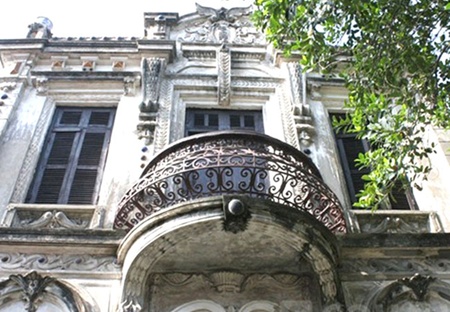Resulting from a combination of East meets West in the early 20th century, ornamental motifs on the wrought iron railings, balconies, gates and windows give Hanoi a truly elegant beauty.
 |
| Metallic charm: A balcony with iron railings in a French villa. Researcher Tran Hau Yen The says this rich iron heritage is |
Resulting from a combination of East meets West in the early 20th century, ornamental motifs on the wrought iron railings, balconies, gates and windows give Hanoi a truly elegant beauty.
Expert Tran Hau Yen The, a lecturer at the Vietnam Academy of Fine Arts, delivered his research on this field at a conference held on July 18 in Hanoi.
The conference was titled: "Hanoi Seen through ‘Iron Eyelashes'", as The compares an iron balcony with a young girl's curly eyelashes.
It was a chance for him to exchange with readers of his newly released book Song Xua Pho Cu (Old Iron Works on Old Streets) which focuses on the ironwork in Hanoi in the first half of the 20th century.
This book is a result of 15 years meticulous and patient research on the city's ironwork heritage.
The wasn't born in Hanoi but he loves the city and spends much time here to discover its beauty expressed through architectural heritage.
He said the idea of researching the city's old architecture came to him during the days he was living in quarters at the University of National Economics.
"Old living quarters are part of the city's architectural heritage and preserve the historical value of the capital," he said.
To have a panoramic view of ironwork used in urban areas, The also travelled to HCM City, Hue, Nam Dinh and Paris to find out more.
"Before, the ironwork on each house gave us an idea of the lifestyle and culture of the owner.
"Now modern life is more complicated, and houses are covered in modern things such as advertisements and plastic eaves," he said.
"That's the reason why nowadays, it's hard to recognise that a bank was an old French villa or a pho shop hides the architecture of a famous camera shop in the Old Quarter."
Historian Le Van Lan appreciated The's research because it is rare.
"His book questions us about the way we preserve the capital's architectural heritage and artistic ironwork," he said.
"We can also learn from old architecture and use that knowledge when we plan the construction of new urban areas," said Lan.
No comments:
Post a Comment